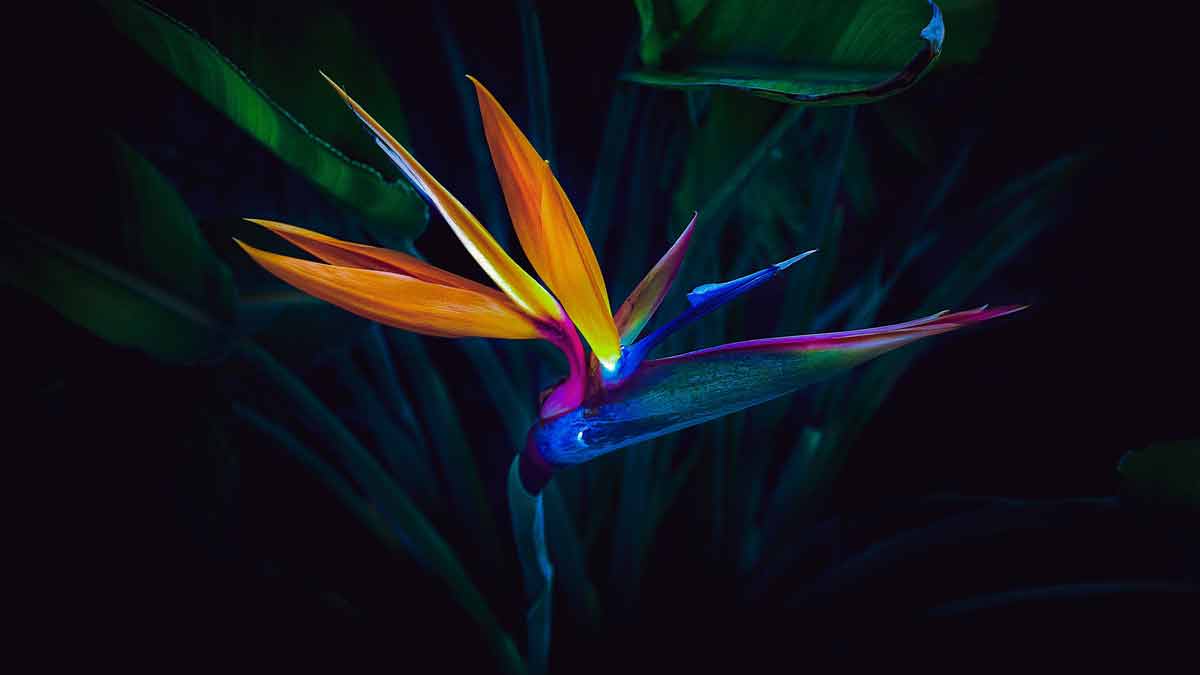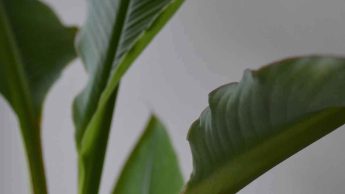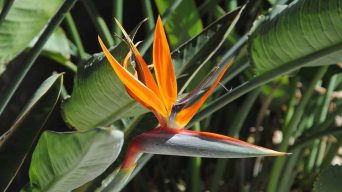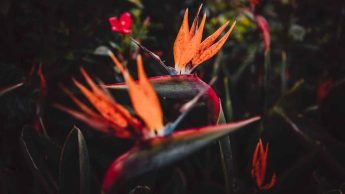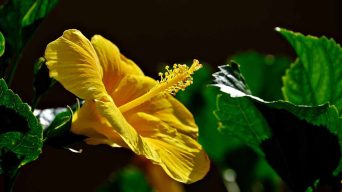Bird of Paradise leaves drooping can be a sign of overwatering, underwatering, or insufficient light. Root rot and transplant shock are also possible causes. To fix it, adjust watering, lighting, and humidity levels. Check for root damage and provide proper drainage.
Are you noticing your Bird of Paradise leaves drooping and wondering how to revive this exotic, tropical plant?
Fear not – this blog post will guide you through the possible reasons for drooping Bird of Paradise leaves and provide practical solutions to return your treasured plant to its vibrant beauty.
Understanding The Reasons For Drooping Bird Of Paradise Leaves
Drooping Bird of Paradise leaves can be a common problem for plant owners, and various reasons can contribute to it.
These include watering issues, lack of light, transplant shock, low humidity levels, and pests and diseases.
Understanding the causes of this issue is essential for plant care and ensuring healthy growth.
Watering Issues: Overwatering & Underwatering
One of the leading causes of drooping Bird of Paradise leaves is improper watering, which can manifest as either overwatering or underwatering.
Overwatering your paradise plant may lead to root rot. This common issue arises when roots remain submerged in water for extended periods.
This deprives them of oxygen and results in weakened stems and droopy leaves.
Striking the perfect balance between overwatering and underwatering is essential for maintaining healthy Bird of Paradise foliage.
Ensure you use well-draining soil mixtures with drainage holes at the bottom of pots so excess water can escape easily.
Monitor your plant closely by regularly checking its soil moisture levels; adjust your watering schedule accordingly if it feels too moist or dry.
Lack Of Light
One common cause of drooping Bird of Paradise leaves is insufficient light.
As a tropical plant, the bird of paradise thrives in bright indirect sunlight and requires about 5-7 hours of exposure each day to maintain healthy growth.
Insufficient light leads to weakened leaves that may become droopy or discolored.
To ensure proper lighting for your paradise plant without exposure to harsh direct sunlight, place it near windows with filtered light or invest in grow lights designed explicitly for houseplants.
Remember that extended periods in dimly lit conditions can cause your crane flower’s foliage to droop and show signs such as curling leaves and yellowing edges.
Transplant Shock
Transplant shock is a common cause of drooping Bird of Paradise leaves, as these plants are susceptible to disturbances during repotting.
The large root system of the Strelitzia reginae or Strelitzia nicolai can quickly become stressed and damaged when removed from its original pot.
This leads to wilting, yellowing, or the plant’s eventual death.
Additionally, be gentle when handling your indoor plant’s root ball during relocation.
Place the Bird of Paradise in well-draining soil with a drainage hole in its new pot to avoid damage from excess water.
Once repotted, ensure proper care by providing adequate sunlight for energy recovery.
This tropical beauty needs bright indirect light to thrive.
Low Humidity Levels
Low humidity levels can commonly cause drooping Bird of Paradise leaves.
This tropical plant thrives in high humidity environments, and when the air is dry, it can lead to water loss from the plant’s leaves.
If your Bird of Paradise leaves are curling or yellowing, this could indicate low humidity levels.
To fix this issue, you can increase moisture around your plant by misting its leaves regularly or using a humidifier nearby.
Consider grouping your houseplants as they create their mini-humid environment.
Pests And Diseases
Pests and diseases can cause drooping in bird of paradise plants.
Common pests include spider mites, aphids, and mealybugs.
These pests can suck the sap out of leaves, causing them to wither and droop.
Fungal leaf spot and Bacterial wilt are common diseases affecting Bird of Paradise plants.
Symptoms include yellowing leaves, wilting, and stunted growth.
How To Fix Drooping Bird Of Paradise Leaves
You can take a few simple steps to revive drooping Bird of Paradise leaves.
Firstly, adjust watering and drainage, increase humidity levels, and ensure adequate sunlight.
Additionally, prune any damaged or dead leaves, and treat any pests or diseases affecting your plant.
Read on to discover more about how to restore your Bird of Paradise to its healthy and vibrant state.
Adjust Watering Frequency & Drainage
Improper watering and drainage are common reasons for drooping Bird of Paradise leaves.
Here’s how to fix it:
- Determine if your plant needs water by feeling the top inch of soil. If it’s dry, it’s time to water.
- Water thoroughly until it drains out of the bottom of the pot, ensuring that there is no standing water in the saucer.
- Wait for the soil to dry before watering again, as overwatering can lead to root rot and drooping leaves.
- Improve drainage by adding perlite or sand to your potting mix or planting in a pot with drainage holes.
- If your plant is in a decorative pot without drainage holes, consider repotting it into a pot with proper drainage.
- Remember that different seasons may require different watering frequencies, so adjust accordingly.
Proper watering and drainage are essential for healthy Bird of Paradise leaves, so meet these basic needs for optimal growth and appearance.
Increasing Humidity Levels
Low humidity is one of the primary causes of drooping Bird of Paradise leaves.
Increasing the humidity around your plant can help fix this issue and promote healthy growth.
Here’s how to do it:
- Group plants together – grouping your bird of paradise with other plants can create a microclimate that increases humidity levels.
- Use a humidifier – if you live in a dry climate, using a humidifier can help increase the moisture in the air around your plant.
- Place a tray of water near the plant – adding a tray near your plant can help increase humidity levels as the water evaporates.
- Mist regularly – misting your bird of paradise leaves regularly can help add moisture to the air and prevent leaf curling.
Following these tips to increase humidity levels, you can help fix drooping Bird of Paradise leaves and keep your plant healthy and thriving.
Remember that keeping the air humidity at 60-80% is ideal for this tropical plant.
Providing Adequate Sunlight
One common reason for Bird of Paradise leaves drooping is a lack of adequate sunlight.
Here are some tips for providing the right amount of light to your plant:
- Place your bird of paradise in a location where it can receive bright, indirect sunlight for at least 6 hours a day.
- Avoid exposing your plant to direct sunlight, as this can scorch its leaves and cause them to droop even further.
- Consider using artificial grow lights designed explicitly for plants if indoor lighting is insufficient.
Remember that different types of Bird of Paradise have different light requirements, with some needing more shade than others.
Keep an eye on the color of the leaves – if they start turning yellow or brown, it could be a sign that they aren’t getting enough light.
Providing adequate sunlight is just one step in fixing drooping bird of paradise leaves – be sure to address any watering or humidity issues to help your plant thrive.
Prune Dead Or Damaged Leaves
If you notice any dead or damaged leaves on your bird of paradise plant, it’s important to prune them to promote healthier growth.
To do so, follow these steps:
- Use sharp and clean gardening shears to cut the affected leaves as close to the base as possible.
- Make sure to dispose of the pruned leaves properly to prevent the spread of any diseases or pests.
- If there are multiple dead or damaged leaves, prioritize pruning the older ones first.
- Regularly inspect your plant for any signs of new damage or disease, and continue pruning as needed.
Pruning dead or damaged leaves helps your Bird of Paradise plant look better and promotes healthy growth by redirecting energy towards new growth instead of trying to maintain damaged leaves.
Always use clean tools when pruning and properly dispose of any affected material to keep your plant healthy!
Treating Pests And Diseases
Pests and diseases can also cause drooping Bird of Paradise leaves.
Here are some treatments that can help:
- Spider Mites: These tiny pests suck the plant’s juices, causing leaf stippling and yellowing. Use a strong stream of water to wash them off, or use insecticidal soap.
- Aphids: These soft-bodied insects cluster on new growth, causing curling and yellowing leaves. Apply insecticidal soap or neem oil to control them.
- Mealybugs: These white, cottony pests congregate in leaf axils and along stems. Wipe them off with a cotton swab dipped in rubbing alcohol.
- Fungal Diseases: Leaf spot and root rot can cause drooping and yellowing leaves. Increase airflow around the plant by pruning crowded branches and applying a fungicide as directed.
By catching these issues early on, you can prevent severe damage to your Bird of Paradise plant.
Regular inspections and care can help keep your plant healthy and vibrant.
Prevention Tips For Healthy Bird Of Paradise Leaves
Several measures can be taken to ensure healthy growth and prevent the drooping of Bird of Paradise leaves.
Using well-draining soil, providing ample sunlight, avoiding overfertilizing, regularly inspecting and caring for the plant, and following a proper watering schedule are essential tips to follow.
These steps will ensure your bird of paradise plant thrives and looks its best.
Proper Watering Schedule
A proper watering schedule is one of the most crucial factors for healthy Bird of Paradise leaves.
Overwatering or underwatering the plant can lead to drooping and root rot, so finding the right balance is important.
Generally, Bird of Paradise plants prefer to be kept evenly moist but not soggy.
You can test if your plant needs water by sticking your finger about an inch into the soil – if it feels dry, it’s time to water.
Another tip is to use filtered or distilled water since tap water can contain harmful chemicals to some houseplants like Bird of Paradise.
Additionally, using a self-watering planter or adding drainage holes in your pot can help prevent overwatering and keep your plant healthy.
Use Well-draining Soil
It’s no secret that Bird of Paradise plants require well-draining soil to stay healthy.
Without proper drainage, the roots can become waterlogged and lead to root rot, a common cause of drooping leaves in this plant.
To ensure good drainage, consider using a potting mix designed specifically for tropical plants like the Bird of Paradise.
If you’re dealing with an already potted Bird of Paradise plant, make sure it has adequate drainage holes at the bottom of the pot so that excess water can escape easily.
If there are no drainage holes, it’s best to repot your plant into a container with them.
Additionally, avoid packing down the soil when planting, as tightly packed soil can prevent water from draining properly, leading to soggy soil conditions.
Provide Adequate Sunlight
Bird of Paradise plants require ample sunlight to stay healthy and thrive.
A minimum of 5-7 hours of direct sunlight daily is ideal, but they can also tolerate medium light conditions.
Inadequate lighting can cause the plant’s leaves to droop, curl, or turn yellowish.
If you don’t have access to direct sunlight, consider using grow lights that mimic natural light patterns.
These artificial LED lights help promote healthy growth and blooming in tropical plants like the Bird of Paradise.
Proper exposure to sufficient light will encourage robust foliage growth with vibrant colors and long-lasting flowers throughout their growing season.
Avoid Overfertilizing
Overfertilizing can cause serious damage to your bird of paradise plant’s health.
While fertilizers are essential for the growth and maintenance of plants, their excessive use can lead to salt buildup in the soil, which is harmful to plant roots.
Salt buildup can reduce water intake by roots and weaken them over time, eventually causing drooping leaves.
So following a proper fertilization schedule is essential for your bird of paradise plant.
Instead, consider organic fertilizers such as compost tea or liquid fish emulsion with low salt content; they provide nutrients slowly and gradually without disturbing soil chemistry.
Regularly Inspect And Care For Your Plant
Regular and consistent care is essential for maintaining healthy bird of paradise leaves.
Regularly inspect the plant for any signs of discoloration, disease, pests, yellowing or drooping leaves, and wilting flowers.
Besides inspection, regular care entails providing sufficient light intensity (by placing your plant near a window with bright indirect sunlight) and avoiding direct sunlight, which can scorch its leaves.
Also, consider feeding it with fertilizer twice a month during the active growing season using half-strength balanced liquid fertilizer diluted in water.
Giving your Bird of Paradise adequate attention will keep it thriving year-round.
Final Thoughts
If you notice your Bird of Paradise leaves drooping, don’t panic!
There are many reasons this may happen and plenty of ways to fix it.
You can keep your plant healthy and thriving by adjusting watering habits, providing adequate light, increasing humidity levels, and treating pests or diseases promptly.
Remember to always inspect and care for your plant regularly to prevent further issues from arising.

